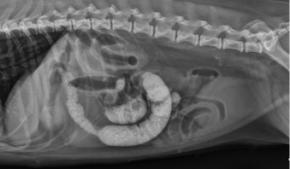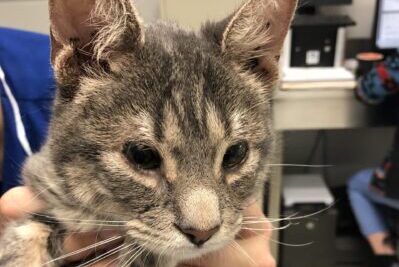Sand Impaction in Dogs: A Summer Bummer

Sand Impaction in Dogs: A Summer Bummer
This is the first in a series of blogs about pets who have been treated for intestinal problems.
Summer is a time for fun and relaxation, but not for poor Lola. After a restful weekend at the beach, she started vomiting and ended up at The Animal Medical Center waiting to be seen by the emergency service. Her story is a cautionary tale for dog owners.
Lola is a 5 year old female Havanese, a small breed dog unfamiliar to many Americans. Havanese are the national dog breed of Cuba. Lola was the picture of health until her trip to the beach. She started vomiting the day she returned home, and by the next morning would no longer eat or drink. Her family made a tense two-and-a-half hour drive back to New York City to bring Lola to The AMC while she progressively became more and more lifeless. The emergency service veterinarian noted Lola’s abdomen was painful during examination and ordered an x-ray in addition to administering intravenous fluid therapy.
Problem found
No one was expecting what the x-rays showed–over seven inches of sausage-shaped impacted intestine, which was filled to a diameter of nearly one inch with something that looked suspiciously like sand. It’s no wonder the poor girl was not feeling well; her stomach must have felt like a lead balloon.
Lola was admitted to the hospital and intravenous fluid therapy continued to compensate for fluid lost due to vomiting. Additional treatments included antacids and medications to protect her stomach from abrasion as the sand worked its way out of her system. The hospital staff walked Lola outdoors frequently, as too much bed rest can slow down movements of the intestinal tract. For Lola to get back on track she needed to pass the sand as soon as possible.
On the second day of hospitalization, Lola turned the corner. She felt much better and started to eat without vomiting. Sand started coming out the other end and we knew she was going to recover.
Sand impaction is a serious problem, most commonly for horses and cows. In an urban hospital like The AMC, we rarely see sand impaction. A recent study of sand impaction in British dogs reported surgical removal of the impacted sand in about half the dogs in the study. Sadly, not all dogs with sand impaction successfully recover.
Fortunately, Lola’s story had a happy ending.
Next time she goes to the beach, Lola’s activities will be monitored more closely to keep her from eating sand. If she goes swimming and starts gulping down sandy water, her beach time will be cut short. If your dog has tummy troubles after spending time at the shore, see your veterinarian, because sand impaction is no day at the beach.


































